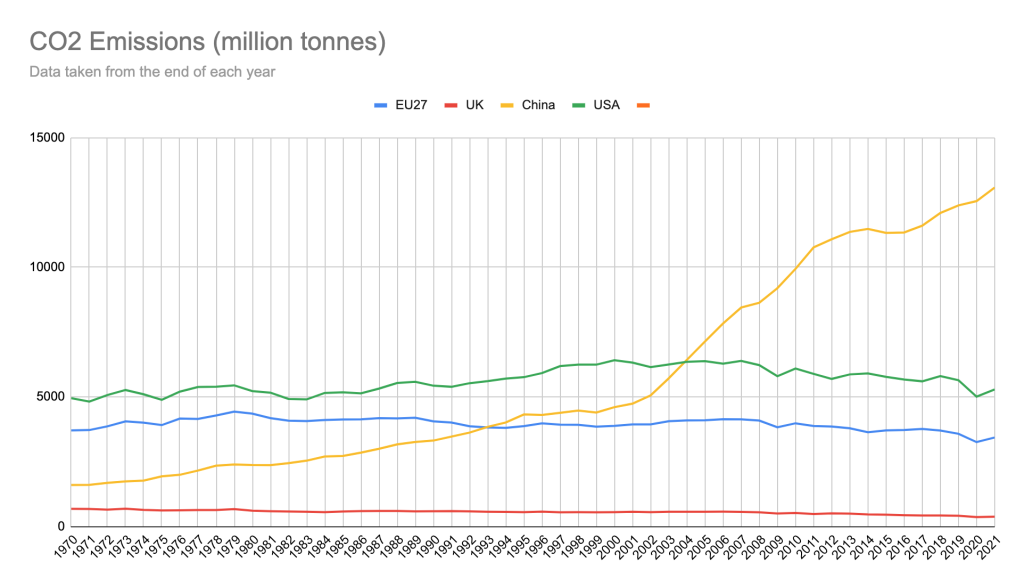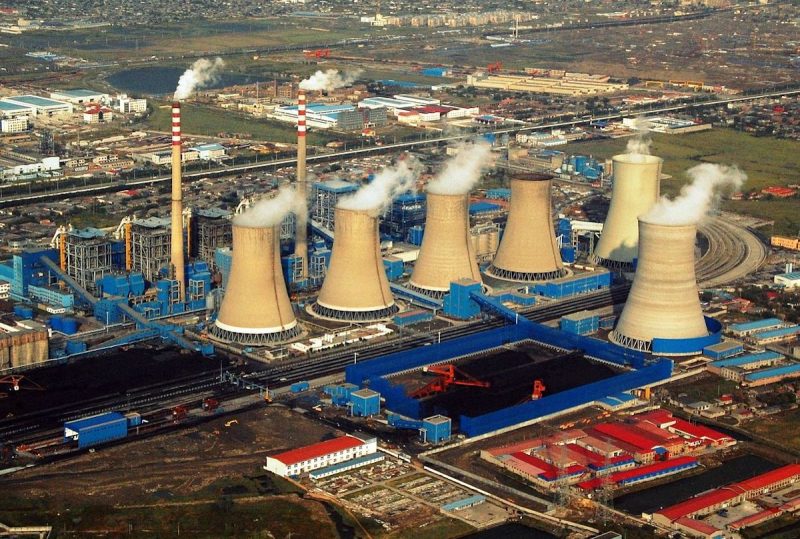China, the United States and the European Union – the world’s three largest carbon dioxide producers – have been called to commit to net zero after their emissions increased last year.
China saw its CO2 emissions rise to record high at 13,078 million tonnes in 2021, up 4.16% from a year earlier, according to the data of the EU’s Joint Research Centre (EU-JRC).
The US’s emissions rebounded 5.6% year-on-year to 5,289 million tonnes last year after they declined 11.2% in 2020 amid the pandemic.
The EU’s also grew 5.4% year-on-year to 3,438 million tonnes in 2021 after they dropped 12% a year ago.
Academics said they are worried that countries will sacrifice their net zero goals for economic growth in the post-pandemic era.


Elizabeth Robinson, director of the Grantham Research Institute on Climate Change and the Environment, London School of Economics and Political Science, said: “The reason why we are experiencing this level of warming is due to the accumulation of greenhouse gases (GHG) in the atmosphere.
“Collectively higher income countries are responsible for the majority of emissions, and they have high per capita emissions.
“We need to focus on the big emitters, such as – in no particular order – the US, China, the European Union, Canada and Australia, etc.”
China, the US and the EU contributed 48% of the world’s CO2 emissions last year, the EU-JRC’s data showed.
The Paris Agreement
As CO2 emissions continue to rise, the Earth has already been 1.1°C warmer than it was in the late 1800s.
To keep global warming to no more than 1.5°C, major countries reached the Paris Agreement in the United Nations Climate Change Conference (COP21) in December 2015 and targeted to cut GHG emissions by 45% by 2030 from 1990 levels and reach net zero by 2050.
The US withdrew from the Paris Agreement in 2017. Although it vowed to halve its GHG emissions by 2030 from 2005 levels, it has so far cut them by about 17%.
It subsequently rejoined the Paris Agreement in 2021.
China, which has surpassed the US to become the world’s largest CO2 emitter since 2005, promised to slash CO2 emissions per GDP by over 65% in 2030 from 2005 levels. It has already lowered the figure by 44%.
The country targets to peak its CO2 emissions by 2030 and achieve net zero by 2060.

Jessica Eise, an assistant professor of Social and Environmental Challenges, the University of Texas at San Antonio, said: “Definitely China and the US need to be leading the charge of climate change but the question is – will they?”
Eise said as many US politicians have to run for re-elections every two years, they tend to focus more on short term issues such as economic growth, instead of long-term green targets.
She said: “I do not believe the general global public is broadly aware that China is now the world’s largest CO2 emitter. And I do not think western governments are going to take an active role in applying effective pressure on China to reduce emissions.”
However, she added that more and more informational campaigns that effectively inform consumers about the carbon footprint of Chinese manufacturing products could be effective in applying pressure.
Robinson said many countries, including the United Kingdom, had “exported” its emissions to places like China, from where they could purchase a large quantity of manufactured goods without gaining carbon footprint.
She said: “Because of its size, it is vital that China reduces its emissions, and ideally achieves net zero well before 2060.
“Given that China’s emissions account for over a quarter of global emissions, it is clearly in China’s interests to reduce its emissions and to see global emissions fall rapidly.”
Energy efficiency
Some European countries have successfully turned green by reducing their carbon emissions over the last half century, according to the Emissions Database for Global Atmospheric Research (EDGAR).
Since 1970, the United Kingdom, Germany and France have lowered their CO2 emissions by 44%, 30% and 27%, respectively, after switching from coal to gas.
Eise said: “Some European countries have successfully reduced their CO2 emissions because their form of governance and cultural outlook involves a sense of collectivism and social welfare that begets a belief that society is well when all social members are well.”
She said countries should leverage their own unique governance and cultural outlook to develop their problem-solving approach to climate change.
Meanwhile, many Middle East countries have reported high CO2 emissions per capita in recent years.
Robinson said it is in the interests of oil rich countries to use their energy reserves more efficiently and to reduce their dependence on oil, given that other countries will transition away from fossil fuels.
The Chinese Embassy in the UK and the press offices of the European Commission and the US Department of Energy were approached for comment but they did not respond before the publication of this article.
For more stories about climate change, click here.





Join the discussion